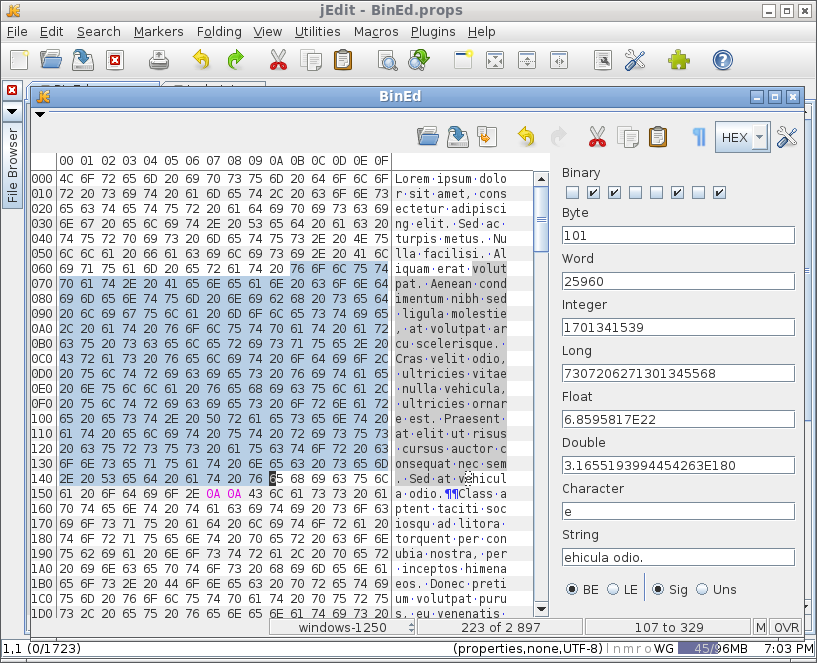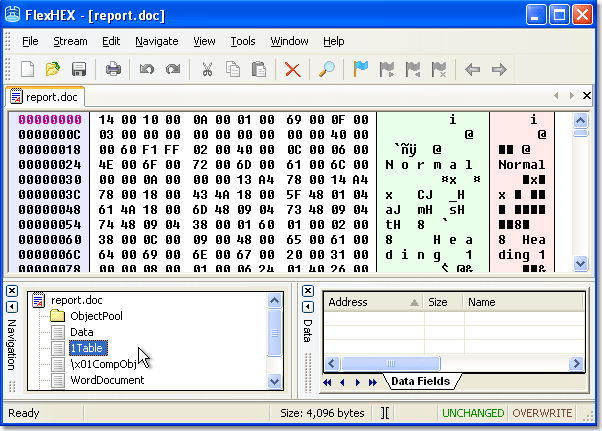

- Binary editor how to install#
- Binary editor how to 32 bit#
- Binary editor how to software#
- Binary editor how to code#
More info can be found at the official wiki by clicking here.Ĭlick here for more info on editing your. Vim takes some getting used to but is really great once you take the time to learn how it works.Īdditionally, vim allows you to edit just about anything including sqlite and all kinds of other stuff.Īlso, when you convert a binary to hex and then edit, I think you may need to convert back to binary by using :%! xxd -r command as described here.

Press ESC and then type :q followed by ENTER or ESC and then type :q! followed by ENTER to exit the file. Press ESC and then type :w followed by ENTER to save the file. Press ESC and then i for "INSERT" mode which allows you to edit.
Binary editor how to 32 bit#
Once the file is open, press ESC and then type :%! xxd -b and then press ENTER.Īlternatively, you can add the flag -g4 to group the bits into 32 bit packets like :%! xxd -b -g4įor hex edit, use the vim command :%! xxd instead or :%! xxd -g4 Note: you can drag and drop the file into the terminal to automatically fill in the path for youįYI, the :%! command prefix allows you to pipe the current file's contents to command's stdin, and replaces the file's contents with command's stdout. Now, use the vim command :%! xxd -b to edit binary like in this example: vim /path/to/filename
Binary editor how to install#
Just to make sure, go ahead and install vim: sudo apt-get update Other than that, though, setting a binary value in the registry is no different – and no more difficult – than setting a string value or a numeric value.You can use vim which should already be installed. (An easy way to do that? Use Calculator in Scientific mode.)

That can be a little bit confusing if you’re following instructions for setting a registry value and the instructions say, “Set the value to 0A.” Before you can use the SetBinaryValue method you’ll need to convert 0A to its decimal equivalent. The registry works with hexadecimal values, but the SetBinaryValue method requires us to pass regular decimal numbers. Likewise you don’t see the number 10 in a binary registry value you see 0A. You don’t see the number 1 in a binary registry value you see 01. So what’s the catch? Well, if you’re familiar with binary values in the registry, you know that numbers are represented by hexadecimal values. Having defined our constant and assigned values to all our variables, all that’s left is to call the SetBinaryValue metod to write these 10 values to the registry: errReturn = objRegistry.SetBinaryValue _
Binary editor how to code#
Finally we use this line of code to assign the numbers 1 through 10 to an array variable we named arrValues this, of course, represents the binary data we want to write to the registry: arrValues = Array(1,2,3,4,5,6,7,8,9,10) A second variable – strValueName – is assigned the value BinaryTest, which happens to be the registry value we want to change.
Binary editor how to software#
We assign the key name Software to a variable named strKeyPath this is the registry path within HKCU. That’s different from the vast majority of WMI classes used for system administration, most of which are found in root\cimv2. We then connect to the WMI service note that the Standard Registry Provider is found in the root\default namespace. The script begins by defining a constant named HKEY_CURRENT_USER and assigning it the value &H80000001 this tells the Standard Registry Provider that we want to work with the HKEY_CURRENT_USER portion of the registry. (HKEY_CURRENT_USER, strKeyPath, strValueName, arrValues)

(“winmgmts:\\” & strComputer & “\root\default:StdRegProv”) Here’s the script: Const HKEY_CURRENT_USER = &H80000001 In other words, you don’t need to create BinaryTest before trying this sample script if BinaryTest doesn’t exist, WMI will create it for you. If the value doesn’t exist, the script will create BinaryTest and then assign it the numbers 1 through 10. If the referenced registry value exists then the script will simply replace the existing value with the new value (in this case, the numbers 1 though 10). Save a disks MBR (Master Boot Record) or Volume Boot Sector, or copy many sectors (such as the first 100 or 2100). There’s one little catch to be aware of, but we’ll let you know what that is.įirst, though, let’s take a look at a script that writes the numbers 1 through 10 to a binary registry value named BinaryTest found in HKCU\Software. The steps below show how any user accessible data (of 1 byte to about 1 Gigabyte ), can be saved to a binary file using the HxD hex/disk editor. WMI’s Standard Registry Provider includes a method – SetBinaryData – that makes it relatively easy to write binary data to the registry. Hey, Scripting Guy! How can I write binary data to the registry? Hi Folks, If I open the logs in vi editor but as the logs get update after few seconds and I want to see the latest lines then whats the command to see the latest lines in vi editor itself, lets say I have open a log named abc.log in vi.


 0 kommentar(er)
0 kommentar(er)
